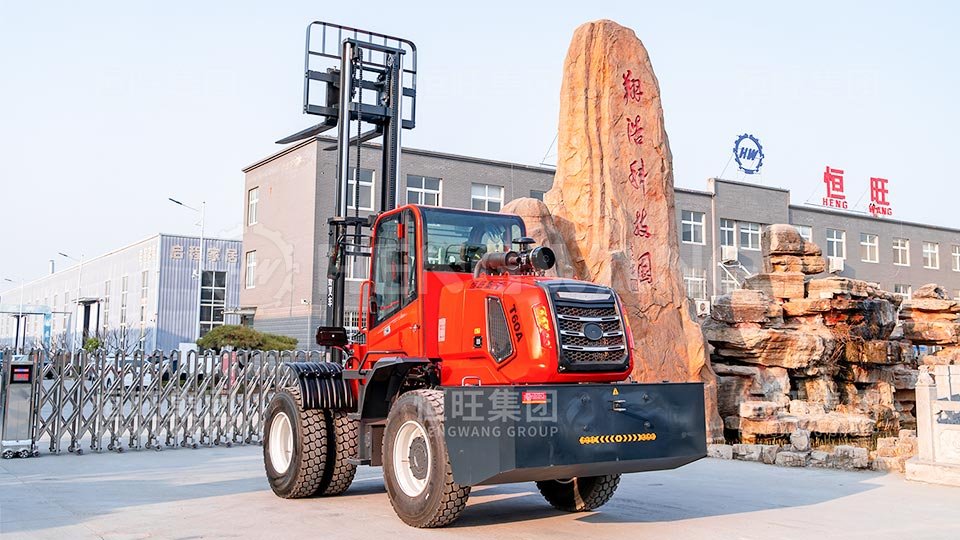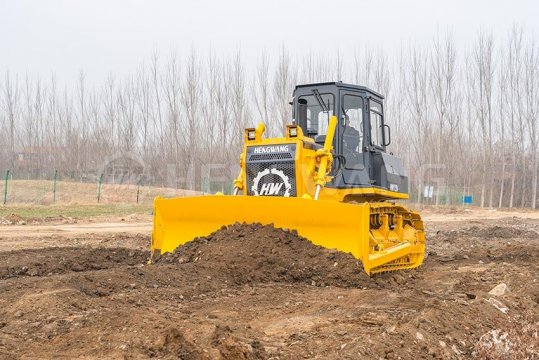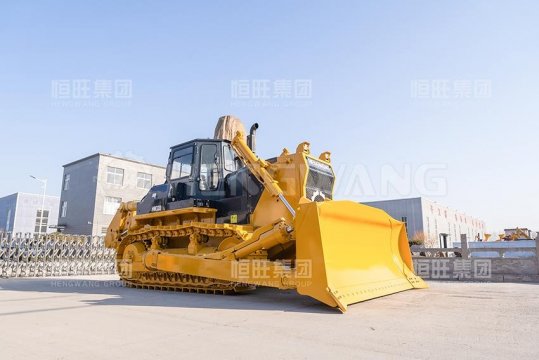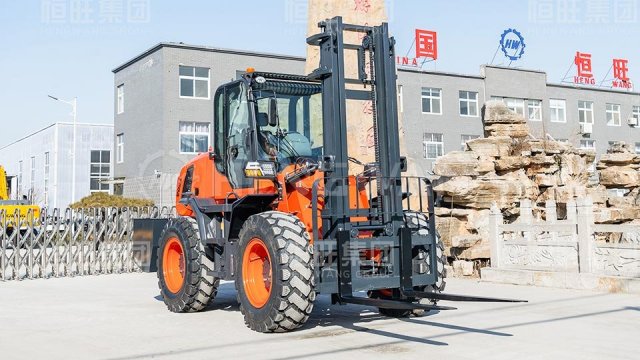In field scenarios such as mines, oilfields, and forest camps, the off-road forklift for field work has become a key link connecting material transportation and on-site operations, relying on its strong terrain adaptability and efficient handling performance. Compared with ordinary warehouse forklifts , the off-road forklift for field work not only copes with non-paved roads such as mud, steep slopes, and gravel but also meets the needs of heavy-load handling and multi-scenario operations. This article analyzes the core advantages, selection standards, and maintenance points of the off-road forklift for field work to help you match suitable equipment.
1. Why Can Off-road Forklift for Field Work Break Through Terrain Limitations?
The core competitiveness of the off-road forklift for field work stems from the "four-wheel drive + reinforcement" design logic: the full-time four-wheel drive system combined with large-size off-road tires (such as 12R22.5 vacuum steel wire tires) can drive stably on 30° slopes and swamps; the heavy-duty mast and high-strength forks can bear 6T-level heavy loads to avoid deformation and fracture; the enclosed cab is equipped with dustproof and waterproof design, making the off-road forklift for field work reliable even in dusty, rainy, and snowy environments. In mine material transfer, one off-road forklift for field work can replace the combination of traditional forklifts and tractors, improving work efficiency by 40%, which is the core reason for the wide application of the off-road forklift for field work.
2. Key Performance Indicators of Off-road Forklift for Field Work
Power Output: High-quality off-road forklift for field work needs to be equipped with a high-power engine (≥103kw), matched with a double high-low speed gearbox to ensure that power does not when climbing with heavy loads, which is the basis for the off-road forklift for field work to cope with complex road conditions.
Load and Lifting Capacity: Choose 3-6T models according to operational needs. A lifting height of ≥4 meters can cover container loading/unloading and high-altitude material transfer, meeting the "all-round" needs of the off-road forklift for field work.
Terrain Passability: With a minimum ground clearance of ≥300mm, approach and departure angles of ≥25°, and puncture-resistant tires, the off-road forklift for field work can easily cross gravel piles and shallows.
Operational Convenience: Adopting a centralized operating handle and hydraulic power steering, even novices can quickly master the operation skills of the off-road forklift for field work, reducing training costs.
3. Selection Strategies for Off-road Forklift for Field Work in Different Field Scenarios
Mine Camps: Prioritize 6T heavy-duty off-road forklift for field work, equipped with heavy-duty axles (such as GS30 type) and hydraulic dumping devices to adapt to high-frequency handling of ores and equipment, reducing manual intervention.
Forest Logging Areas: Choose 4-5T flexible models. The off-road forklift for field work needs to be equipped with protective railings and log grab attachments. A lifting height of ≥3.5 meters can meet the needs of wood stacking while avoiding scratches from tree branches.
Oilfield Exploration Bases: Explosion-proof off-road forklift for field work is required. The engine and hydraulic system meet explosion-proof standards, and tires are made of anti-static materials, adapting to safety regulations in flammable and explosive environments.
4. Maintenance and Lifespan Extension Tips for Off-road Forklift for Field Work
Power System Maintenance: Check engine oil and filters every 50 hours of operation, and drain water from the fuel tank once a week to prevent impurities from entering the oil circuit, which is key to ensuring stable power of the off-road forklift for field work.
Tire and Chassis Inspection: Clean gravel in tire patterns daily and tighten chassis bolts monthly to avoid component damage caused by looseness of the off-road forklift for field work on bumpy roads.
Hydraulic System Maintenance: Regularly replace hydraulic oil (recommended every 1000 hours) and check the tightness of pipeline joints to ensure smooth lifting and tilting actions of the off-road forklift for field work without leakage.
Hengwang Group Off-road Forklift : A Reliable Choice for Field Operations
As a representative of high-performance off-road forklift for field work, Hengwang HWC-60A off-road forklift perfectly adapts to multi-scenario field needs: equipped with a 103kw Xichai engine, it has strong power and low fuel consumption. The 6T load capacity and 4-meter lifting height can meet heavy-load handling; 12R22.5 vacuum steel wire tires combined with GS30 type heavy-duty axles make the off-road forklift for field work move smoothly in swamps, mountains, and other terrains . The equipment adopts a user-friendly operation design with a centralized handle and complete gears. The hydraulic dumping device realizes fast unloading, greatly improving the operation efficiency of the off-road forklift for field work . Relying on the "four-dimensional integration" service system, Hengwang provides 24-hour after-sales response and parts support to ensure the continuous and efficient operation of the off-road forklift for field work . The HWC-60A has passed ISO and CE certifications, making it a reliable choice for field operations.
Take Action Now: Leave your operation scenario and load demand to obtain an exclusive selection plan for the off-road forklift for field work. The Hengwang technical team will respond within 24 hours! Choosing the right off-road forklift for field work can turn logistics handling in complex environments from a "problem" to a "normality". Hengwang off-road forklift for field work escorts every field operation.

 Bulldozer Blade Types: Core Configuration for Adapting to Different Operating Scenarios
Bulldozer Blade Types: Core Configuration for Adapting to Different Operating Scenarios
 Swamp bulldozer: An Efficient Solution for Operations in Muddy Environments
Swamp bulldozer: An Efficient Solution for Operations in Muddy Environments
 Rough terrain forklift with highest load capacity: A High-performance Solution for Heavy-duty Outdoor Operations
Rough terrain forklift with highest load capacity: A High-performance Solution for Heavy-duty Outdoor Operations